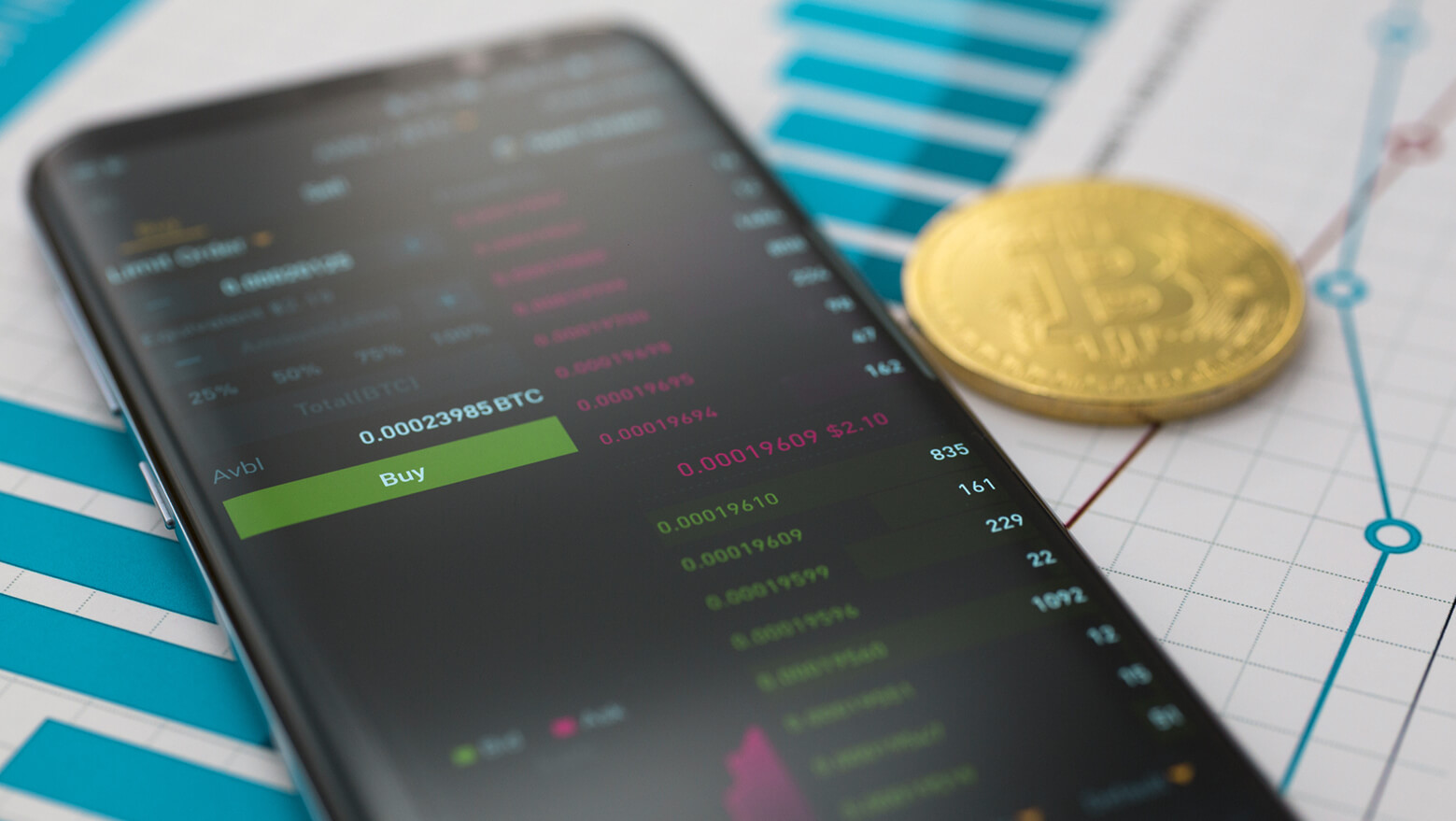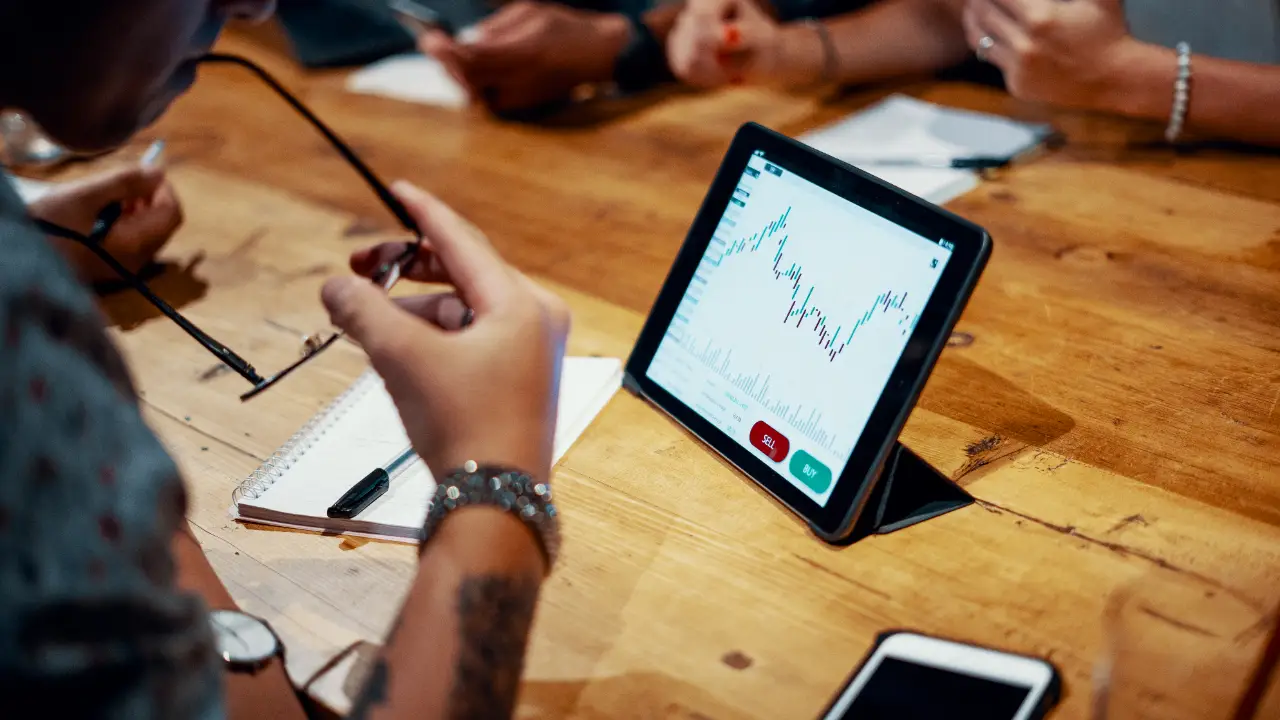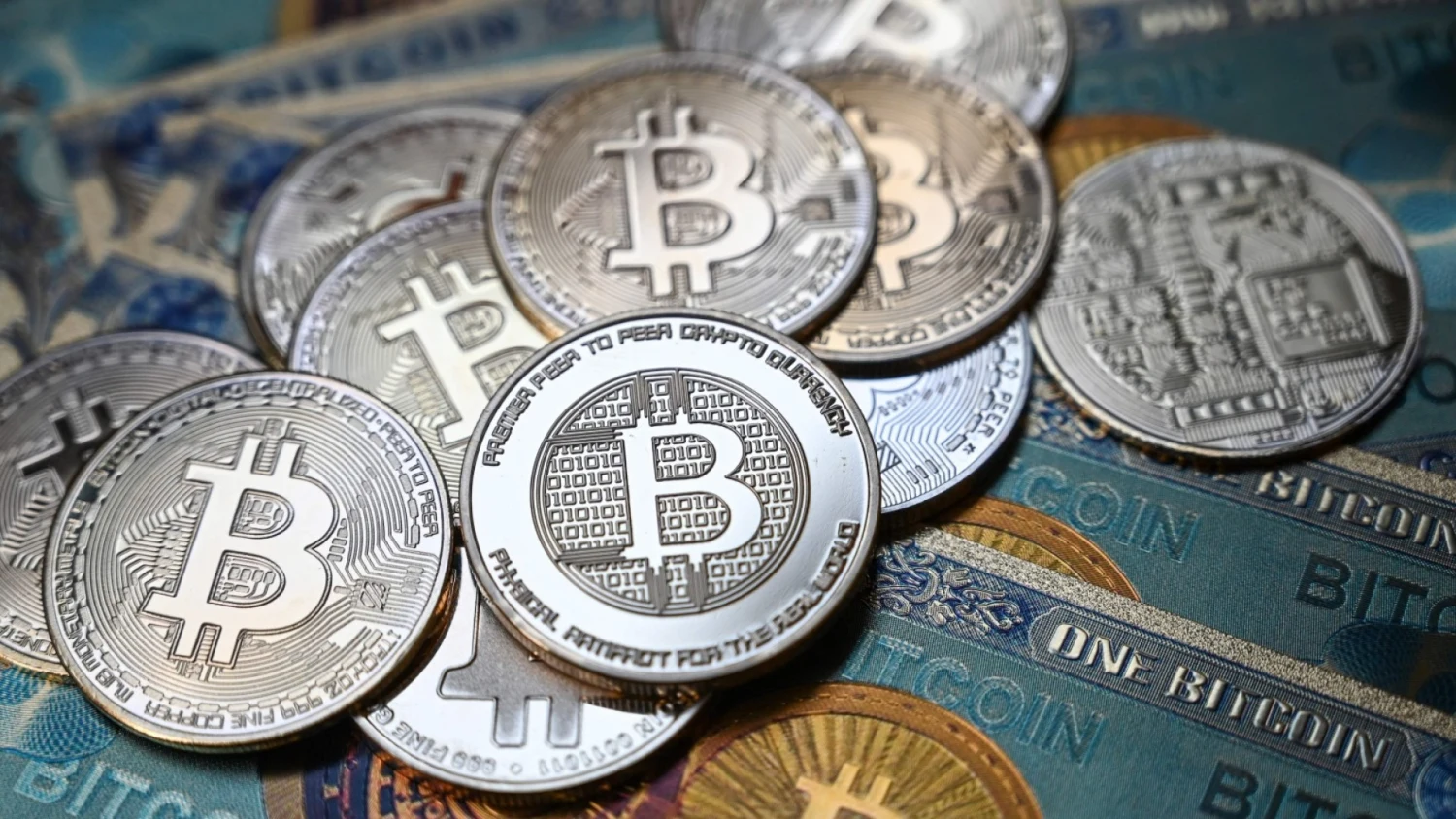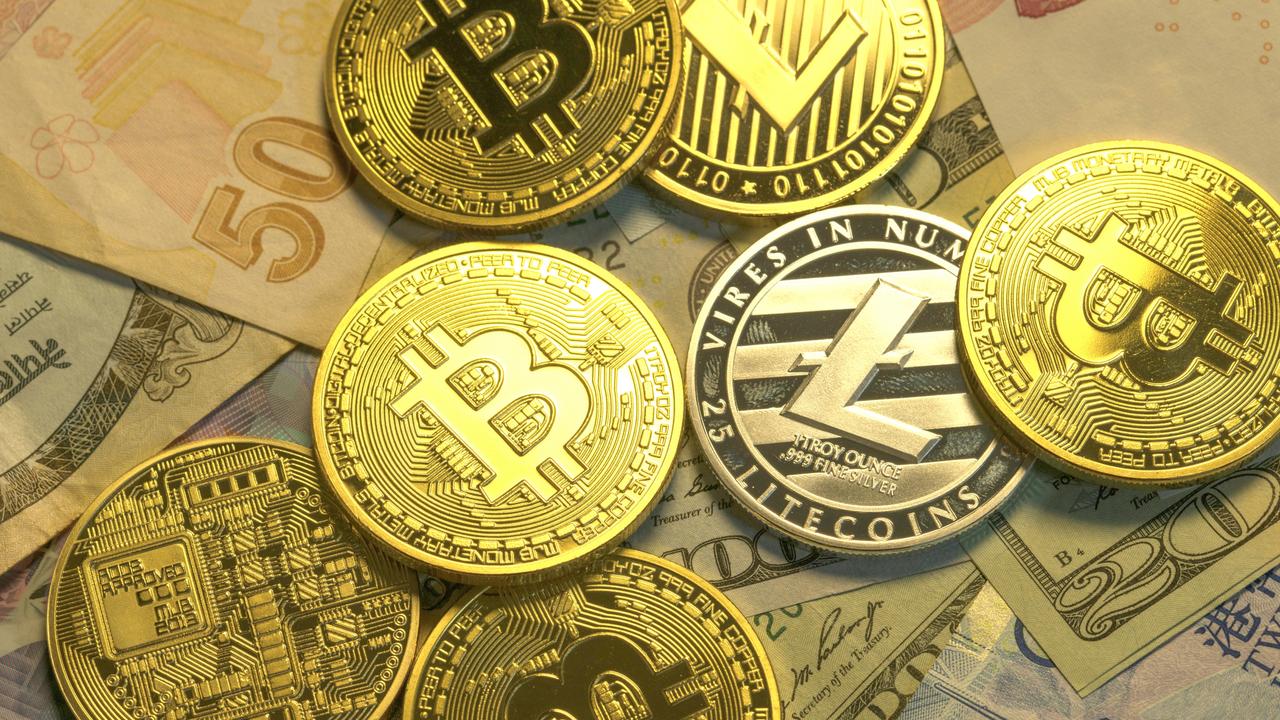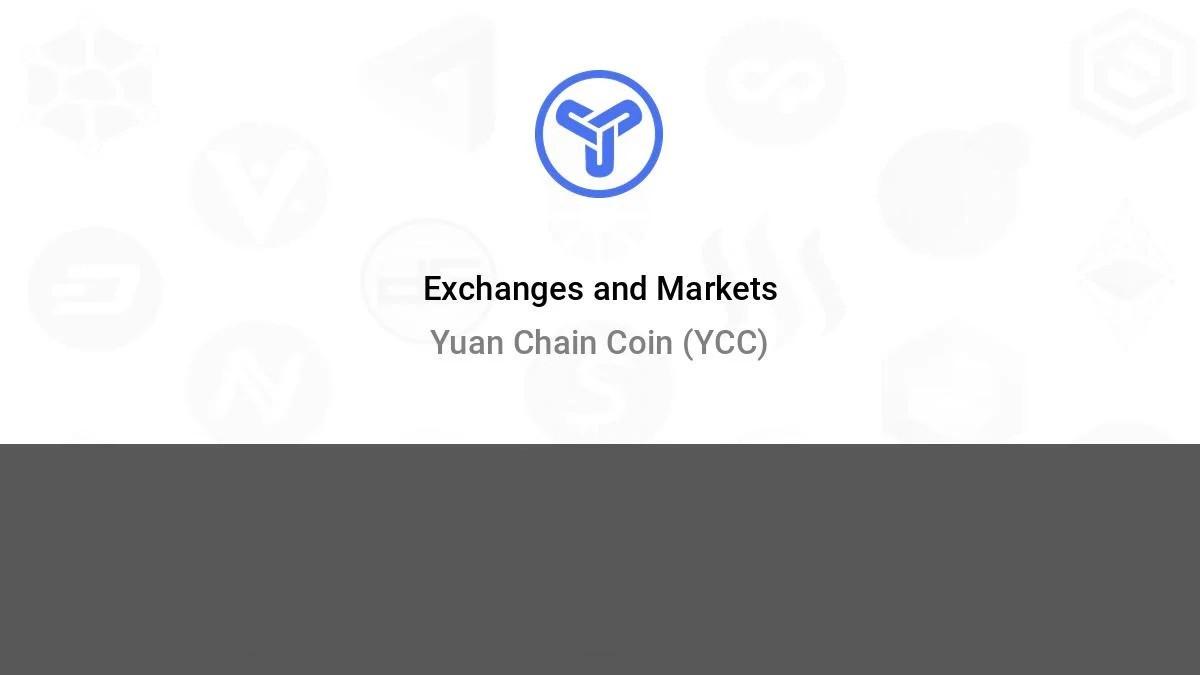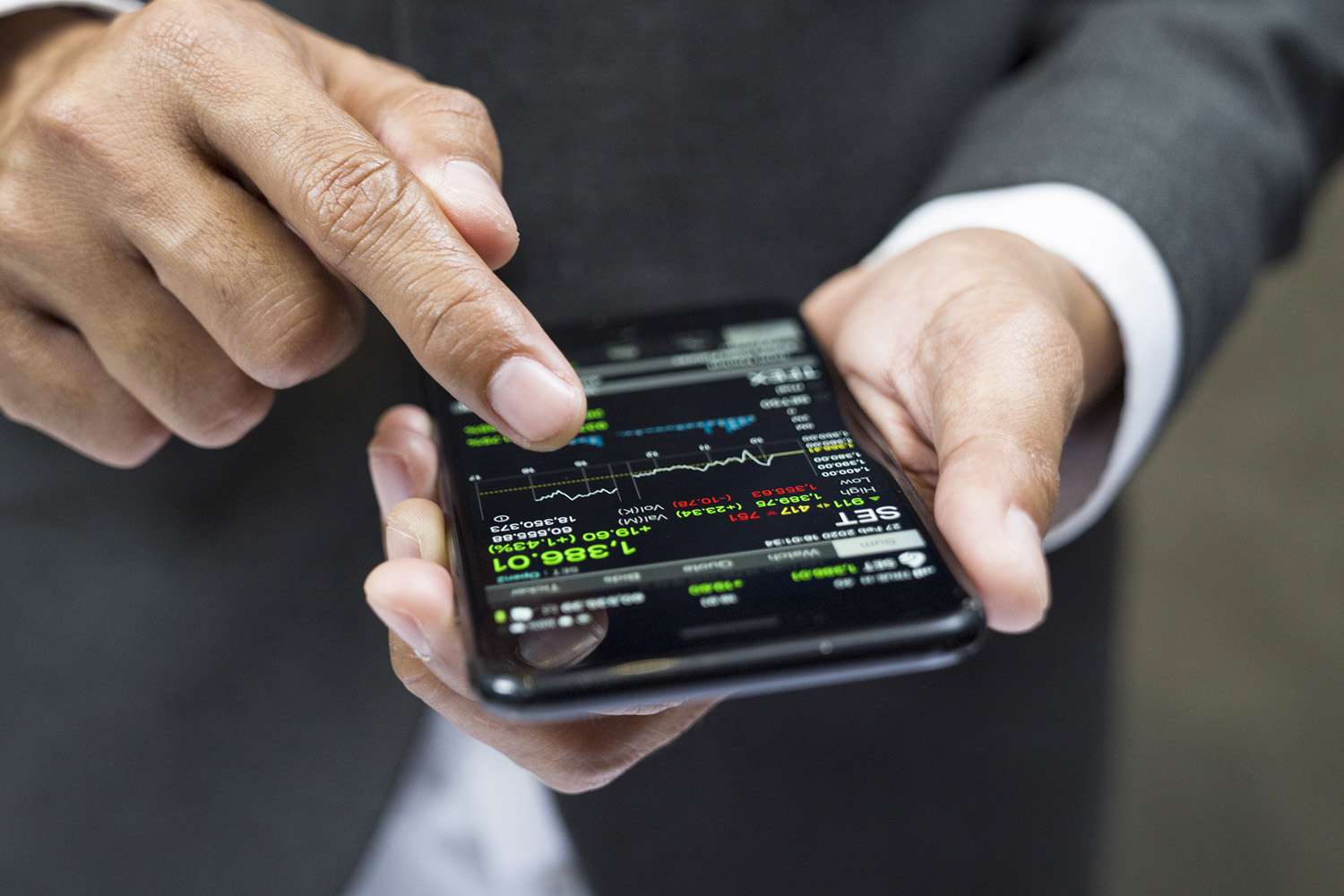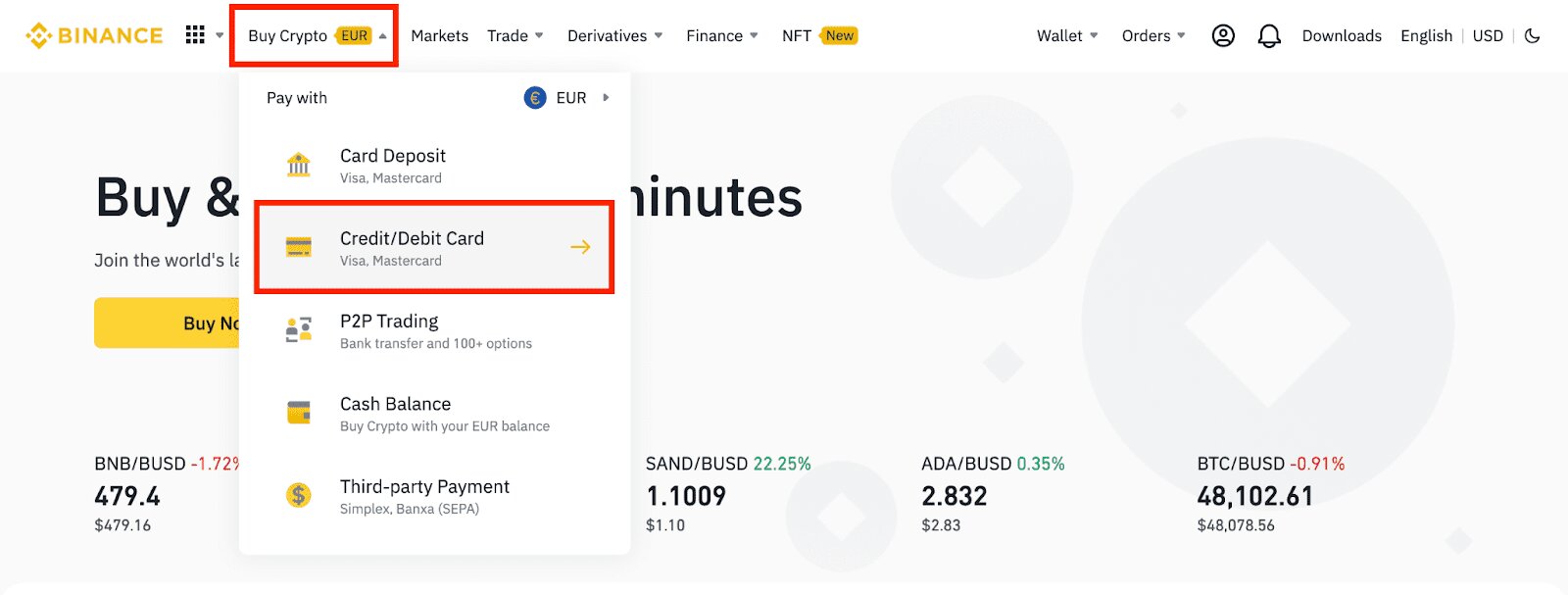Introduction
Welcome to the world of digital currency exchanges! In this digital age, cryptocurrencies have gained a massive following and have become increasingly popular as a form of digital asset investment. With the rise of cryptocurrencies such as Bitcoin, Ethereum, and Litecoin, the need for secure and convenient platforms to buy, sell, and trade these digital assets has also grown.
A digital currency exchange is an online platform that allows individuals to buy, sell, and trade cryptocurrencies. These exchanges provide a centralized marketplace where users can interact with each other or with the exchange directly to execute their transactions. They act as intermediaries that facilitate the exchange of digital assets and provide users with a secure platform to manage their cryptocurrency portfolio.
There are several types of digital currency exchanges available, each catering to different trading needs and preferences. Some exchanges offer a wide range of cryptocurrencies, while others specialize in specific coins. It is important to choose the right exchange that aligns with your investment goals, risk tolerance, and desired features.
Setting up an account on a digital currency exchange is relatively straightforward. Users typically need to provide personal information, such as their name, email address, and in some cases, identity verification documents. It is crucial to choose reputable exchanges that prioritize security and have robust measures in place to protect users’ funds and personal information.
Once you have set up your account, it is essential to familiarize yourself with market orders, which are used to buy or sell cryptocurrencies at the prevailing market price. Understanding market orders and their different types, such as limit orders and stop orders, will enable you to execute trades effectively and efficiently.
Monitoring your trade activity is crucial to staying informed about market trends and your portfolio’s performance. Most digital currency exchanges provide real-time charts and analysis tools that can help you track your investments and make informed decisions.
Managing your digital assets involves storing them securely in digital wallets. Digital wallets can be online, offline, or hardware-based, each offering different levels of security. It is important to choose a wallet that suits your needs and take precautions, such as enabling two-factor authentication, to protect your assets.
In this guide, we will explore the various aspects of using a digital currency exchange, from choosing the right exchange to placing trades and managing your digital assets. We will also provide tips and best practices to help you navigate the world of cryptocurrency trading successfully. Whether you are a seasoned trader or new to the world of cryptocurrencies, this guide will equip you with the knowledge and tools necessary to make informed decisions and maximize your investment potential.
What is a Digital Currency Exchange?
A digital currency exchange, also known as a cryptocurrency exchange, is an online platform that facilitates the buying, selling, and trading of cryptocurrencies. It serves as a marketplace where individuals can exchange their traditional fiat currencies, such as US dollars or euros, for cryptocurrencies like Bitcoin, Ethereum, or Litecoin. These exchanges act as intermediaries, connecting buyers and sellers and providing a secure environment for transactions to occur.
Unlike traditional stock exchanges, digital currency exchanges operate 24/7, allowing users to trade cryptocurrencies at any time. They provide users with access to a wide range of cryptocurrencies, offering both popular and emerging digital assets. The availability of various cryptocurrencies enables investors to diversify their portfolios and take advantage of potential investment opportunities in the ever-evolving cryptocurrency market.
Digital currency exchanges are equipped with intuitive trading interfaces that make it easy for users to place buy or sell orders. Users can choose between different types of orders, such as market orders and limit orders, depending on their trading preferences. Market orders allow users to buy or sell cryptocurrencies at the current market price, while limit orders enable users to specify the desired price at which they want to buy or sell.
One of the key features of digital currency exchanges is their ability to facilitate peer-to-peer trading. Users can directly interact with other users on the exchange, offering the opportunity for decentralized transactions. However, many exchanges also act as market makers, providing liquidity by offering buy and sell orders on behalf of their users. This ensures that there is always enough liquidity in the market to fulfill trade requests.
Security is paramount in the world of digital currency exchanges. Reputable exchanges implement stringent security measures to protect users’ accounts and funds. These measures often include two-factor authentication, encryption, and cold storage for storing users’ digital assets offline, away from potential security threats.
Furthermore, digital currency exchanges often provide additional features and services to enhance the trading experience. Some exchanges offer margin trading, allowing users to trade with borrowed funds and potentially amplify their profits. Others provide advanced charting tools, price alerts, and educational resources to help users make informed trading decisions.
Overall, digital currency exchanges have revolutionized the way people buy, sell, and trade cryptocurrencies. They provide a convenient and secure platform for individuals to enter the world of cryptocurrencies and participate in the growing digital asset market. By leveraging the features and services offered by digital currency exchanges, users can navigate the complex world of cryptocurrencies and potentially benefit from their investment in this emerging asset class.
Types of Digital Currency Exchanges
Digital currency exchanges come in various forms, each catering to different trading needs and preferences. Understanding the different types of exchanges will help you choose the one that aligns with your investment goals and trading style. Here are the common types of digital currency exchanges:
- Centralized Exchanges: These are the most common type of digital currency exchanges. Centralized exchanges act as intermediaries that facilitate transactions between buyers and sellers. They maintain order books, match buy and sell orders, and hold users’ funds in custody. Examples of popular centralized exchanges include Binance, Coinbase, and Kraken. These exchanges offer user-friendly interfaces, high liquidity, and a wide range of cryptocurrencies to trade.
- Decentralized Exchanges (DEX): Unlike centralized exchanges, decentralized exchanges operate on a distributed network of computers without a central governing authority. They allow users to trade directly with each other using smart contracts. DEXs provide users with better privacy and control over their funds, as there is no need to deposit funds into an exchange-controlled wallet. However, liquidity on DEXs can be lower compared to centralized exchanges. Examples of decentralized exchanges include Uniswap, SushiSwap, and PancakeSwap.
- Peer-to-Peer (P2P) Exchanges: P2P exchanges connect buyers and sellers directly, without any intermediary. Buyers and sellers can create listings to trade cryptocurrencies, and the exchange acts as a platform for matching their orders. P2P exchanges provide users with more privacy, as they do not require users to disclose personal information. LocalBitcoins and Paxful are popular P2P exchanges that facilitate direct trading between individuals.
- Fiat-to-Crypto Exchanges: These exchanges specialize in facilitating the conversion of traditional fiat currencies, such as US dollars or euros, into cryptocurrencies. They often require users to go through a Know Your Customer (KYC) verification process due to the involvement of traditional financial systems. Fiat-to-crypto exchanges are suitable for users who want to enter the cryptocurrency market using their local currency. Examples include Coinbase, Bitstamp, and Gemini.
- Crypto-to-Crypto Exchanges: Crypto-to-crypto exchanges focus on enabling trading between different cryptocurrencies. They offer a wide range of cryptocurrency pairs, allowing users to exchange one cryptocurrency for another. These exchanges are popular among more experienced traders looking to diversify their portfolio or take advantage of specific cryptocurrency pairings. Binance, Bittrex, and Poloniex are popular crypto-to-crypto exchanges.
It is important to consider factors such as security, fees, liquidity, available trading pairs, and user experience when choosing a digital currency exchange. Each type of exchange has its own advantages and disadvantages, so it is crucial to select the one that best suits your trading needs and preferences. Additionally, conducting thorough research and reading user reviews can help you make an informed decision and find an exchange that meets your requirements.
Choosing the Right Exchange
With a multitude of digital currency exchanges available, choosing the right one can be overwhelming. The exchange you choose will significantly impact your trading experience, security, and access to different cryptocurrencies. Here are some factors to consider when selecting a digital currency exchange:
Security: The security of your funds should be a top priority when choosing an exchange. Look for exchanges that have a strong track record of security and employ industry-standard protocols such as two-factor authentication (2FA) and encryption. Additionally, consider exchanges that hold users’ funds in cold storage, which keeps the majority of assets offline, away from potential hacking threats.
Regulation and Compliance: It is important to choose an exchange that operates in compliance with regulatory frameworks. Exchanges that follow regulations provide an added layer of transparency and accountability, which can help protect your investments. Check if the exchange is licensed or registered with relevant regulatory authorities in their jurisdiction.
Liquidity: Liquidity is crucial for smooth trading as it ensures there are enough buyers and sellers on the exchange. Higher liquidity means you can easily enter and exit positions at the desired price. Exchanges with high trading volumes generally have better liquidity, providing more favorable trading conditions.
Supported Cryptocurrencies: Different exchanges offer varying selections of cryptocurrencies. If you have specific cryptocurrencies in mind that you want to trade or invest in, make sure the exchange supports those coins. Consider the variety of available trading pairs and the exchange’s commitment to adding new cryptocurrencies in the future.
Trading Fees: Exchanges charge fees for each transaction, including deposit, withdrawal, and trading fees. Compare the fee structures of different exchanges and consider the impact of fees on your trading strategy. Look for exchanges with competitive fees and transparent fee structures.
User Interface and Experience: The user interface of the exchange plays a significant role in your trading experience. Look for an exchange with a clean and intuitive interface that is easy to navigate. Consider whether the exchange offers advanced charting tools, analytical capabilities, and responsive customer support to aid your trading decisions.
Reputation and User Reviews: Conduct thorough research and read user reviews to gain insights into the reputation and reliability of an exchange. Look for feedback regarding customer support, platform stability, and overall user experience. Check if there have been any past security incidents or complaints against the exchange.
Geographic Restrictions: Some exchanges may have restrictions on users from certain countries. Ensure that the exchange you choose is available in your country and accepts users from your region. Additionally, consider the availability of local fiat currency support if you plan to deposit or withdraw funds using your local currency.
By considering the factors mentioned above, you can narrow down your options and select an exchange that aligns with your trading needs, security preferences, and desired coin selection. Remember to conduct your due diligence and start with small transactions before committing significant funds to any exchange. Choosing the right exchange is an essential step towards a successful and secure cryptocurrency trading experience.
Setting Up an Account
Setting up an account on a digital currency exchange is the first step towards entering the world of cryptocurrency trading. While the exact process may vary slightly between exchanges, the overall steps involved are often similar. Here is a general guide on how to set up an account on a digital currency exchange:
- Choose an Exchange: Research and choose a reputable digital currency exchange that aligns with your trading needs and preferences. Consider factors such as security, supported cryptocurrencies, fees, and user experience.
- Registration: Visit the exchange’s website and click on the “Sign Up” or “Register” button to start the registration process. You will typically be required to provide basic personal information, such as your name, email address, and sometimes your phone number.
- Identity Verification: Due to regulatory requirements, many exchanges require users to complete a Know Your Customer (KYC) process. This involves providing additional identification documents, such as a government-issued ID, proof of address, or a selfie with your ID. Follow the instructions provided by the exchange to complete the verification process.
- Enable Two-Factor Authentication (2FA): To enhance the security of your account, enable two-factor authentication. This adds an extra layer of protection by requiring a verification code from a mobile app, email, or text message during logins or withdrawals.
- Secure Your Account: Set a strong and unique password for your account. Avoid using easily guessable passwords or reusing passwords from other accounts. Additionally, familiarize yourself with the security measures provided by the exchange, such as withdrawal whitelisting or IP address restrictions.
- Deposit Funds: Once your account is set up and verified, you can proceed to deposit funds into your exchange account. Most exchanges support various deposit methods, including bank transfers, credit cards, or cryptocurrencies. Choose the deposit method that is most convenient for you and follow the instructions provided by the exchange.
- Understand Fees and Trading Rules: Familiarize yourself with the fee structure of the exchange, including deposit and withdrawal fees, as well as trading fees. Take note of any minimum deposit requirements and trading rules that may apply to your account.
- Explore the Trading Interface: Take some time to navigate through the exchange’s trading interface and get familiar with its features. Most exchanges provide intuitive trading interfaces that allow you to place market orders, limit orders, and view real-time charts and order books.
- Secure your Wallet: Some exchanges offer integrated wallets for storing your cryptocurrencies, while others require you to set up separate wallets. If the exchange provides a wallet, consider enabling additional security measures such as two-factor authentication or withdrawal whitelisting. If you opt for an external wallet, ensure that you set it up securely and keep your private keys safe.
- Practice Caution: Before diving into live trading, it is advisable to familiarize yourself with the exchange’s trading features using a demo or paper trading account. This allows you to practice trading strategies and get comfortable with the platform without risking real funds.
Remember to carefully review the exchange’s terms of service and any additional policies or guidelines they may have. By following these steps and taking necessary security precautions, you can set up your account on a digital currency exchange with confidence and start your journey into cryptocurrency trading.
Security Measures to Consider
When using a digital currency exchange, ensuring the security of your funds and personal information is crucial. The cryptocurrency market can be subject to malicious activities, making it essential to take appropriate security measures. Here are some security measures to consider when using a digital currency exchange:
1. Strong and Unique Password: Create a strong and unique password for your exchange account. Avoid using common passwords or reusing passwords from other accounts. A strong password typically contains a combination of uppercase and lowercase letters, numbers, and special characters.
2. Two-Factor Authentication (2FA): Enable two-factor authentication to add an extra layer of security to your account. With 2FA, you will be required to provide a verification code from a mobile app, email, or text message in addition to your password during login or withdrawal attempts.
3. Withdrawal Whitelisting: Some exchanges provide the option to set up withdrawal whitelisting, which allows you to specify a list of approved wallet addresses for withdrawals. This adds an extra layer of protection and prevents unauthorized withdrawals to unknown addresses.
4. Secure Internet Connection: When accessing your exchange account, make sure you are using a secure and private internet connection. Avoid using public Wi-Fi networks or unsecured networks that could expose your login credentials or personal information to potential threats.
5. Regularly Update Software: Keep your computer and mobile devices up to date with the latest software updates and security patches. These updates often include important security fixes that can help protect your devices from vulnerabilities.
6. Verify Website Security: Before accessing the exchange’s website, ensure that you are visiting the correct URL. Look for the padlock symbol in the address bar, indicating that the website has a valid SSL certificate and that your data is encrypted during transmission.
7. Be Cautious of Phishing Attempts: Be vigilant about phishing attempts, which are fraudulent attempts to trick users into revealing their login credentials or personal information. Be cautious of suspicious emails, links, or messages that ask for sensitive information and only interact with official channels of communication provided by the exchange.
8. Separate Exchange Wallets: Consider using separate wallets for storing your funds instead of keeping them directly on the exchange. This gives you more control and security over your assets, reducing the risk of losing funds in the event of an exchange hack.
9. Keep Private Keys Secure: If you use a separate wallet, ensure that you keep your private keys securely stored offline. Private keys are required to access and manage your cryptocurrencies, so it is crucial to protect them from unauthorized access.
10. Stay Informed: Stay informed about the latest security practices and developments in the cryptocurrency industry. Regularly review the exchange’s security features and updates, and consider following reputable sources for security guidance and news.
It is important to note that no security measure can guarantee absolute protection. However, by implementing these security measures and staying vigilant, you can significantly reduce the risk of falling victim to cyber threats and protect your funds and personal information when using a digital currency exchange.
Understanding Market Orders
Market orders are a fundamental concept in digital currency trading. Understanding how market orders work is essential for executing trades effectively and efficiently on a digital currency exchange. Let’s delve into the details of market orders:
Market Buy Order: A market buy order is an instruction to purchase a specific cryptocurrency at the prevailing market price. When you place a market buy order, you are willing to buy the cryptocurrency immediately, regardless of the price. The exchange will execute the order by matching it with existing sell orders on the exchange.
Market Sell Order: Conversely, a market sell order is a request to sell a specific cryptocurrency at the current market price. By placing a market sell order, you indicate your willingness to sell the cryptocurrency promptly, at the best available price offered by buyers in the market.
Order Matching: Digital currency exchanges act as intermediaries between buyers and sellers. When you place a market buy order, the exchange will look for existing sell orders at a price that matches or is lower than your bid. The exchange will then execute the trade by matching your buy order with the most favorable sell order(s) available.
Market Depth: Market depth refers to the quantity of buy and sell orders available at different price levels. It represents the liquidity of a particular cryptocurrency in the market. Higher market depth indicates a more liquid market, meaning there are more buyers and sellers available to match market orders.
Slippage: Slippage may occur when executing market orders, especially in markets with low liquidity. Slippage refers to a difference between the expected price of an order and the actual executed price. If there is a limited supply of sellers in the market, a market buy order may cause the price to increase due to increased demand, resulting in slippage.
Instant Execution: Market orders typically result in almost instant execution, as they are executed at the prevailing market price. This ensures that your order is filled promptly, giving you immediate ownership of the desired cryptocurrency.
Market Order Considerations: It is important to consider a few factors when using market orders. First, due to potential slippage, it is advisable to double-check the available liquidity and the current bid-ask spread before placing a market order, especially for large trades. Second, market orders are efficient for liquid markets but may lead to less favorable execution in illiquid or volatile markets. Lastly, keep in mind that executing large market orders may impact the overall market price, particularly if the market has low liquidity.
Understanding market orders is crucial for effectively navigating the world of digital currency trading. By grasping the concept of market buy and sell orders, you can make informed decisions when executing trades and take advantage of the liquidity and speed offered by digital currency exchanges.
Placing a Trade
Placing a trade on a digital currency exchange involves executing a buy or sell order for a specific cryptocurrency of your choice. Understanding the process behind placing a trade is essential for entering and exiting positions effectively. Let’s explore the steps involved in placing a trade on a digital currency exchange:
1. Choose the Trading Pair: Select the desired trading pair for your trade. A trading pair consists of the cryptocurrency you want to buy or sell (base currency) and the cryptocurrency you want to exchange it for (quote currency). For example, if you want to buy Bitcoin with US dollars, the trading pair would be BTC/USD.
2. Determine the Order Type: Decide whether you want to place a market order or a limit order. A market order is executed immediately at the prevailing market price, while a limit order allows you to set a specific price at which you want the trade to be executed.
3. Market Order: If you choose to place a market order, enter the amount of the base currency you wish to buy or sell. The exchange will automatically execute the order at the best available price in the market.
4. Limit Order: If you opt for a limit order, specify the desired price at which you want the trade to be executed. Enter the amount of the base currency you wish to buy or sell, and the order will be placed on the order book. The trade will be executed only if the market reaches your specified price.
5. Review and Confirm: Before finalizing the trade, review the details of your order, including the trading pair, order type, amount, and price. Double-check that all information is accurate, as trades executed on exchanges are usually irreversible.
6. Execute the Trade: Once you are satisfied with the order details, confirm the trade. The exchange will match your order with corresponding buy or sell orders in the market, and the trade will be executed.
7. Order Status and Confirmation: After placing the trade, monitor the order status. If it is a market order, it will usually be executed instantly. If it is a limit order, it may take some time, as it will only be executed when the market reaches your specified price. Once the trade is executed, you will receive a confirmation indicating the details of the transaction.
8. Managing Open Orders: If your trade is not executed immediately, it will remain as an open order until it is matched or canceled. Monitor your open orders closely and make any necessary adjustments or cancellations based on market conditions or your trading strategy.
9. Trade History: Digital currency exchanges provide a trade history feature that allows you to review your past trades. This can be helpful for analyzing your trading activity, reviewing performance, or for tax purposes.
It is important to note that trading on digital currency exchanges carries inherent risks, and it is essential to have a clear trading strategy and risk management plan. Additionally, be aware of the potential impact of trading fees and market fluctuations on your trades.
By understanding the process of placing a trade on a digital currency exchange, you can confidently execute your desired buy or sell orders. Regularly review your trading positions and adapt to changing market conditions to make informed decisions and maximize your potential profits.
Monitoring Trade Activity
Monitoring trade activity is an essential aspect of effectively managing your digital currency portfolio and staying informed about market trends. By actively monitoring and analyzing your trades, you can make informed decisions and maximize your trading performance. Here are some key points to consider when monitoring trade activity:
Real-Time Market Data: Most digital currency exchanges provide real-time market data, including price charts, order books, and trade history. Utilize these tools to track the performance of your trades and monitor market trends. Stay updated on price fluctuations, trading volumes, and the overall market sentiment.
Portfolio Tracking: Consider using portfolio tracking tools or applications to consolidate and monitor all your digital currency holdings in one place. These tools provide a comprehensive overview of your portfolio’s value, historical performance, and allocation by cryptocurrency. They often offer features such as cost basis tracking, profit/loss calculations, and portfolio diversification analysis.
Risk Assessment: Regularly assess the risk associated with your trades and portfolio. Monitor the market conditions, news, and events that could potentially affect your cryptocurrencies’ value. Stay informed about regulatory updates, technological advancements, and market sentiment that could impact the overall digital currency ecosystem.
Technical Analysis: Utilize technical analysis techniques to analyze price patterns, chart indicators, and historical data. Technical analysis can help identify potential entry and exit points for trades. Stay updated on technical indicators, such as moving averages, support and resistance levels, and trend lines to make informed trading decisions.
News and Updates: Keep yourself informed about the latest news and developments in the digital currency market. News regarding partnerships, regulatory decisions, or technological advancements can significantly impact the value of cryptocurrencies. Follow reputable cryptocurrency news sources, participate in online communities, and attend industry conferences to stay in touch with the latest trends.
Trading Plan Review: Regularly review and assess your trading plan. Monitor the performance of your trades against your set goals, risk tolerance, and trading strategies. Adjust your trading plan as necessary to account for changing market conditions or new information.
Journaling and Performance Analysis: Keep a trading journal to record your trading activity, decisions, and reasons behind your trades. Regularly review your journal to identify patterns, strengths, and areas for improvement. Analyze your past trades to learn from your successes and failures and refine your trading approach.
Emotional Discipline: Emotions can impact trading decisions. Maintain emotional discipline and avoid making impulsive trades based on fear or greed. Stick to your trading plan and strategy, and execute trades based on logical analysis rather than emotional impulses.
Continuous Learning: The digital currency market is constantly evolving. Stay engaged in continuous learning and education to expand your knowledge and stay updated on new trading strategies, tools, and trends. Attend webinars, seminars, and workshops, and participate in online trading forums to learn from experienced traders and industry professionals.
By actively monitoring trade activity, staying informed, conducting regular performance analysis, and continuously learning, you can enhance your trading skills and make informed decisions. Remember that monitoring trade activity is an ongoing process, and it requires diligence, discipline, and adaptability to navigate the dynamic world of digital currency trading effectively.
Managing Your Digital Assets
Managing your digital assets is a crucial aspect of digital currency trading. Effectively organizing and safeguarding your digital assets will help you maintain control over your investments and mitigate potential risks. Here are some important considerations for managing your digital assets:
Secure Storage: Use secure digital wallets to store your cryptocurrencies. Wallets come in different forms, including hardware wallets, software wallets, and online wallets. Hardware wallets offer the highest level of security as they store your private keys offline, away from potential hacking threats. Ensure your wallets are properly encrypted, and use strong passwords, PINs, or biometric authentication for added security.
Diversification: Diversify your digital assets across different cryptocurrencies to spread your risk. Investing in a range of cryptocurrencies can help offset potential losses with gains from other assets. Consider the long-term potential and risk factors associated with different coins when determining your asset allocation.
Risk Management: Implement a risk management strategy to protect your investments. Set a stop-loss level to minimize potential losses if the market moves against your trade. Regularly review your trades and use trailing stops to lock in profits as the market moves in your favor.
Regular Portfolio Review: Regularly review your portfolio to assess the performance of your digital assets. Monitor the price movement of each cryptocurrency, and consider adjusting your portfolio allocation based on market conditions, project developments, and your investment goals.
Tax Considerations: Understand and comply with tax obligations related to digital currency transactions in your jurisdiction. Keep track of your trades, profits, and losses for accurate tax reporting. Consider consulting with a tax professional who specializes in digital currency taxation.
Stay Informed: Stay updated on the latest news, project updates, and market trends in the digital currency space. Follow reliable sources, participate in online communities, and engage in discussions to stay informed about potential opportunities or risks that may impact your portfolio.
Regular Backups: Regularly back up your wallet holdings to protect against loss or theft. Make sure you securely store the backup in an offline location or a trusted cloud-based solution. This ensures that you can recover access to your digital assets in case of device failure or other unforeseen circumstances.
Stay Vigilant: Be cautious of phishing attempts, scams, and fraudulent activities in the digital currency space. Be wary of unsolicited communication, suspicious links, and requests for sensitive information. Always verify the authenticity of any communication before sharing personal or financial details.
Estate Planning: Consider the implications of your digital assets in your estate planning. Cryptocurrencies and digital assets may have unique challenges when it comes to inheritance. Consult with legal professionals to ensure your digital assets are properly outlined in your estate planning documents.
Regular Education: Continue learning and educating yourself on the evolving digital currency landscape. Stay updated on emerging technologies, industry trends, and regulations. Regular education will help you adapt to changing market conditions and make informed decisions.
Managing your digital assets requires careful organization, security measures, and ongoing diligence. By implementing appropriate strategies, staying informed, and adapting to the dynamic digital currency market, you can effectively manage and protect your investments in this exciting and rapidly evolving industry.
Tips for Using a Digital Currency Exchange
Using a digital currency exchange effectively requires knowledge, experience, and careful consideration. To make the most out of your trading experience, here are some helpful tips:
1. Conduct Thorough Research: Before choosing an exchange, conduct thorough research. Consider factors such as security, fees, supported cryptocurrencies, user experience, and customer reviews. Choose a reputable and reliable exchange that aligns with your trading needs.
2. Start with Small Trades: If you are new to trading or using a new exchange, start with small trades. This allows you to test the platform, understand its features, and gain confidence before executing larger trades. Gradually increase your trade size as you become more familiar with the exchange.
3. Keep Track of Fees: Familiarize yourself with the fee structure of the exchange. Understand the deposit, withdrawal, and trading fees associated with your transactions. Factor in the fees when calculating your profits and losses.
4. Set Realistic Goals: Set realistic trading goals based on your risk tolerance, investment capital, and market conditions. Avoid making hasty decisions based on short-term market fluctuations. Remember that trading is a long-term game, and success comes with patience and discipline.
5. Use Dollar-Cost Averaging (DCA): Consider implementing a dollar-cost averaging strategy, especially for long-term investment purposes. DCA involves regularly investing a fixed amount of money at predetermined intervals, regardless of the market price. This strategy can help mitigate the impact of price volatility and potentially yield favorable long-term results.
6. Keep Emotions in Check: Emotions can lead to impulsive and irrational trading decisions. Avoid making emotional trades based on fear or greed. Stick to your trading plan, strategy, and risk management rules. Make decisions based on logical analysis and avoid chasing short-term market trends.
7. Use Stop-Loss Orders: Utilize stop-loss orders to protect yourself from significant losses in volatile markets. Set stop-loss levels based on your risk tolerance and market analysis. This feature automatically triggers a sell order if the price reaches a predetermined level, helping to limit potential losses.
8. Stay Informed: Stay updated on market news, industry developments, and regulatory changes related to digital currencies. This information can help you make informed trading decisions and anticipate potential market movements. Engage with reputable sources, follow industry experts, and participate in online communities to stay informed.
9. Practice Detached Trading: Maintain a detached mindset when trading. Avoid being overly attached to specific trades or fluctuating market prices. Be objective in your analysis and decisions. Emotional detachment can help you make more rational and well-informed trading choices.
10. Continuously Educate Yourself: The digital currency market is evolving rapidly, and it is crucial to stay educated about industry trends, new technologies, and trading strategies. Engage in continuous learning through books, articles, courses, and webinars. Stay curious and adaptable to changes in the market.
By following these tips, you can enhance your trading experience on a digital currency exchange and increase your chances of success. Remember that trading involves risk, and it is essential to invest only what you can afford to lose. Maintain a disciplined approach, stay informed, and continually refine your trading strategies.
Conclusion
Using a digital currency exchange can be an exciting and rewarding experience, allowing you to participate in the world of cryptocurrencies and potentially benefit from their growth. By understanding the fundamentals of digital currency exchanges, such as market orders, types of exchanges, and security measures, you can navigate the trading process confidently and effectively.
When choosing a digital currency exchange, prioritize security, liquidity, and a user-friendly interface. Consider the range of available cryptocurrencies and ensure that the exchange aligns with your trading preferences and goals. Implementing strong security measures, such as two-factor authentication and secure wallet storage, is vital to safeguarding your digital assets.
As you trade on a digital currency exchange, regularly monitor your trade activity and keep track of market trends. Stay informed about the latest news and industry developments, and continuously educate yourself to refine your trading strategies over time.
Remember to approach trading with patience, discipline, and a realistic mindset. Start with small trades, set achievable goals, and manage your risk effectively. By staying emotionally detached and following a well-thought-out trading plan, you can make informed decisions and potentially create profitable trading opportunities.
In conclusion, using a digital currency exchange requires a solid understanding of the platform, market dynamics, and security measures. By applying the tips and strategies outlined in this guide, you can navigate the world of digital currency trading with confidence and increase your chances of success. Embrace continuous learning, adaptability, and prudent risk management as key elements of your trading journey in this fascinating and ever-evolving digital asset space.







